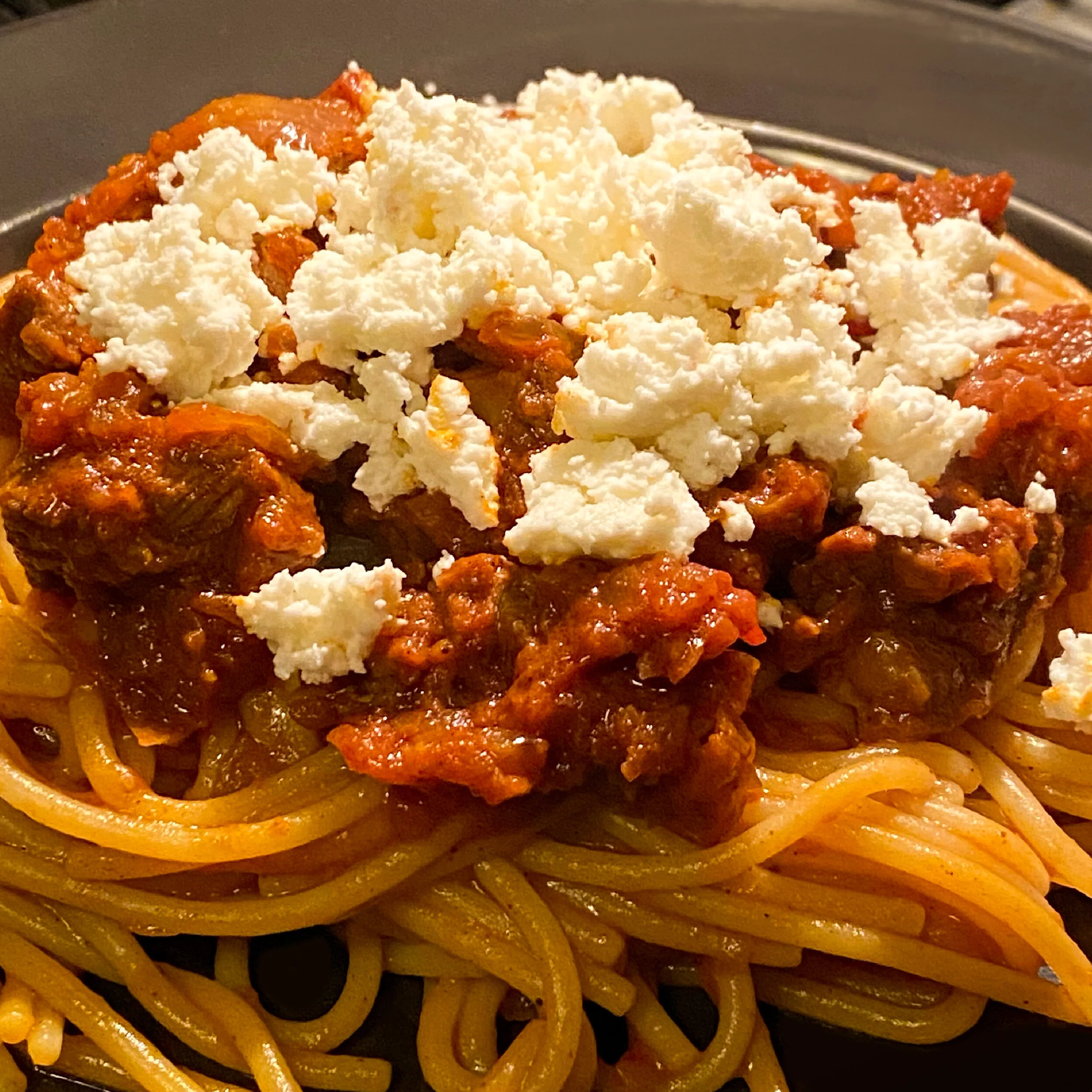The Umbrian version of coratella has been obscured by the more renown Roman dish of the quinto quarto tradition. If you are a newcomer to offal, this is a great dish to get you over the hurdle of curiosity and into appreciation. If you are already an offal fan, this is one you’ll want to add to your repertoire.
Pasta and Perseverance - Part IV: Mischiglio
Mischiglio is a multigrain pasta from the deep south region of Basilicata, part of the so-called cucina povera. Because of its association with poverty, it was cast off when economic conditions improved, as it was an unpleasant reminder of difficult times. As is true with many foodways of poor rural communities, this pasta is being reassessed as a tradition and symbol of resilience and resourcefulness.
Ethiopian spaghetti and spicy meat sauce
ETHIOPIAN SPAGHETTI AND SPICY MEAT SAUCE - Recipe for a fiery meat sauce that arose from Italian colonialism. Learn the history behind the influence of Italian foodways in Northeastern Africa as well as the very recent polemic that brings this history into our own day, where we must reckon with the past.
Chiancaredde - orecchiette tarantine
Pasta and Perseverance - Part III: Struncatura
The history of struncatura, a pasta from southern Calabria, is an intriguing rags to riches story. This is not just another story of la cucina povera but of a pasta that was for years sold under the table given the dubious ingredients and conditions under which it was prepared. What was it about this humble food of sustenance that lifted it from shame to fame? Pasta and Perseverance - Part III: struncatura
Nettles bread
Crostello - Castellano Easter bread
Crostello is a traditional Easter bread made exclusively in Città di Castello. It is a tradition that is quickly slipping into the folds of time. In lockdown Italy, more and more people are taking the time to make food from scratch and we in CdC have discovered that almost no one knows how to make crostello anymore. This post is my mission to save it from oblivion.
Sweet and sour wild boar stew
This traditional stew is from a recipe from 1899, but has antecedents in the Middle Ages. It’s a marriage of sweet, sour, salt, umami, and spice (though not ‘spicy’), with herbal and citrus aromatics. It takes us into the woods to the hunt; it recalls the sensuality of an Arabian banquet, and yet hails from the stalwart Roman table. Historical Italian cooking - food history for practitioners.









